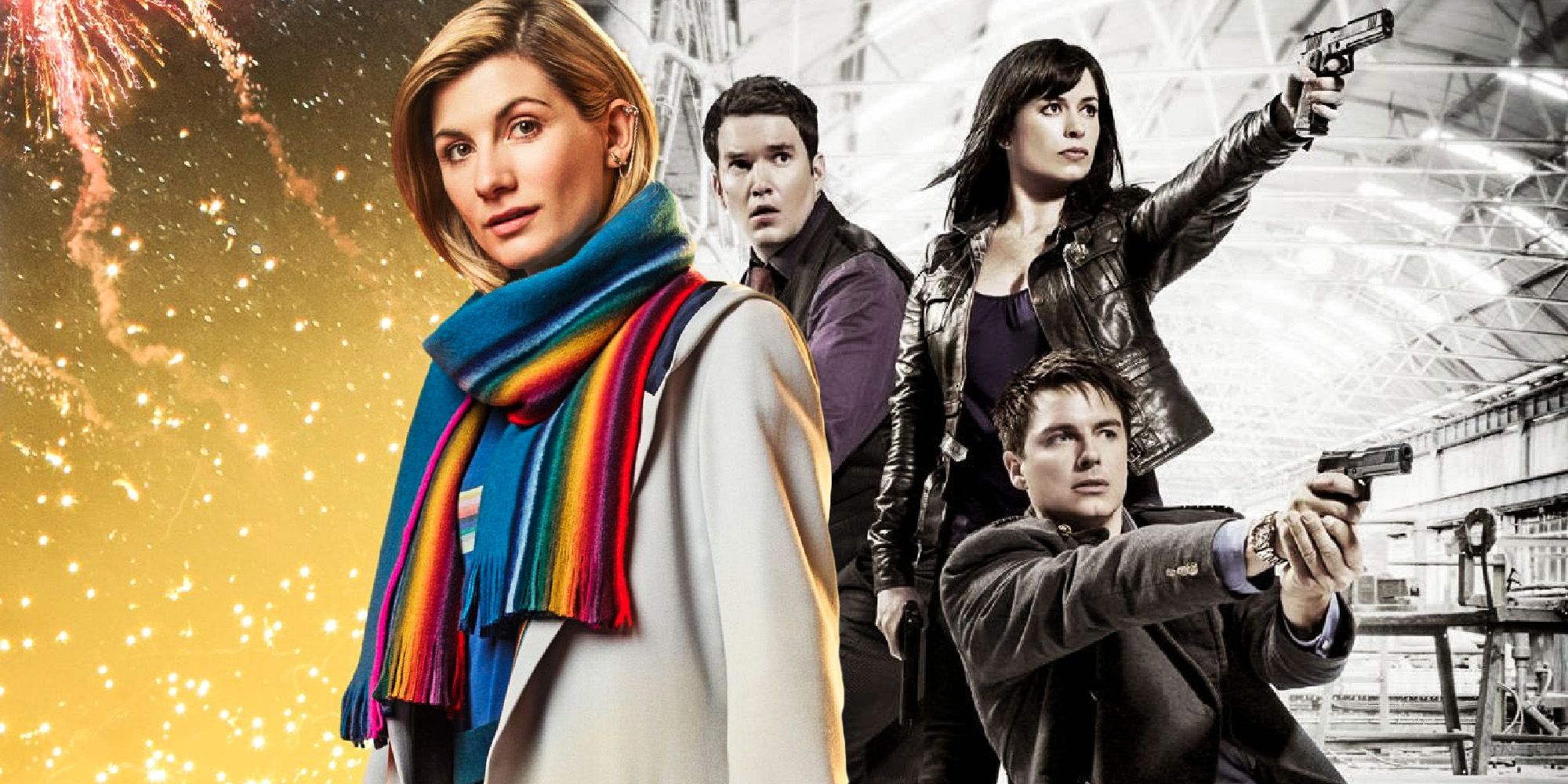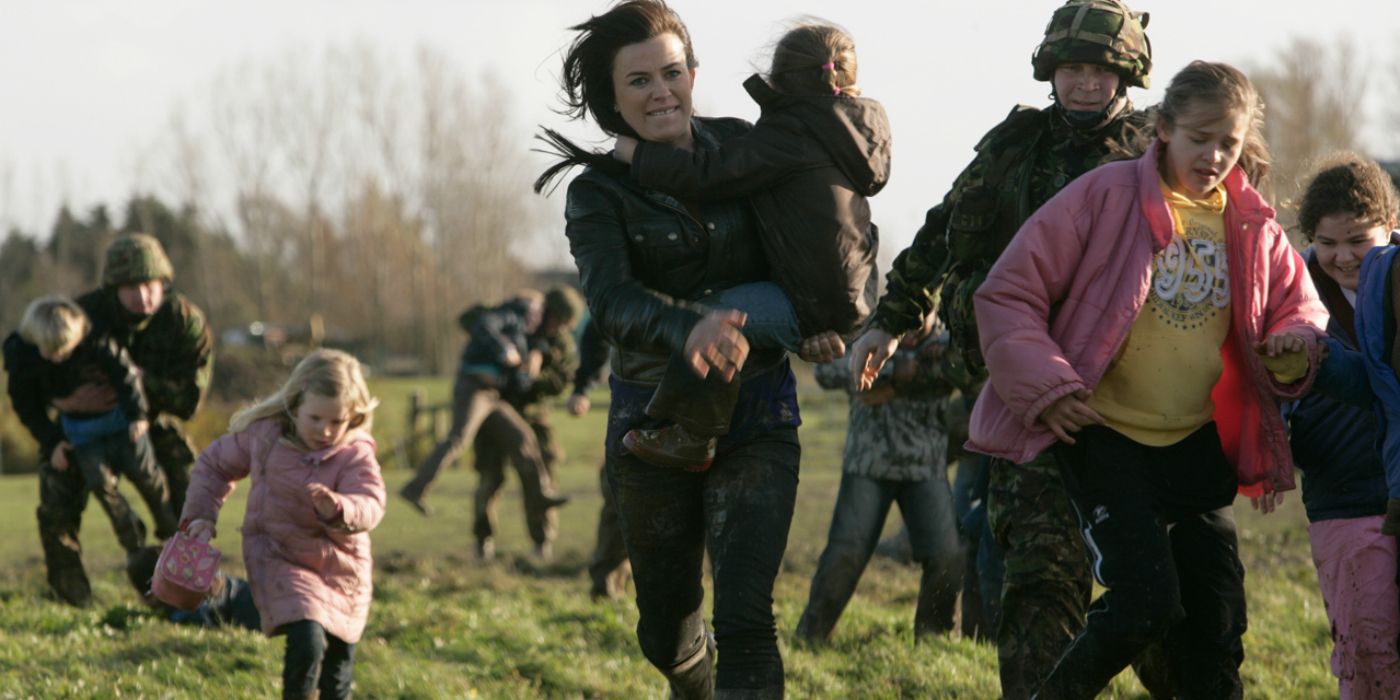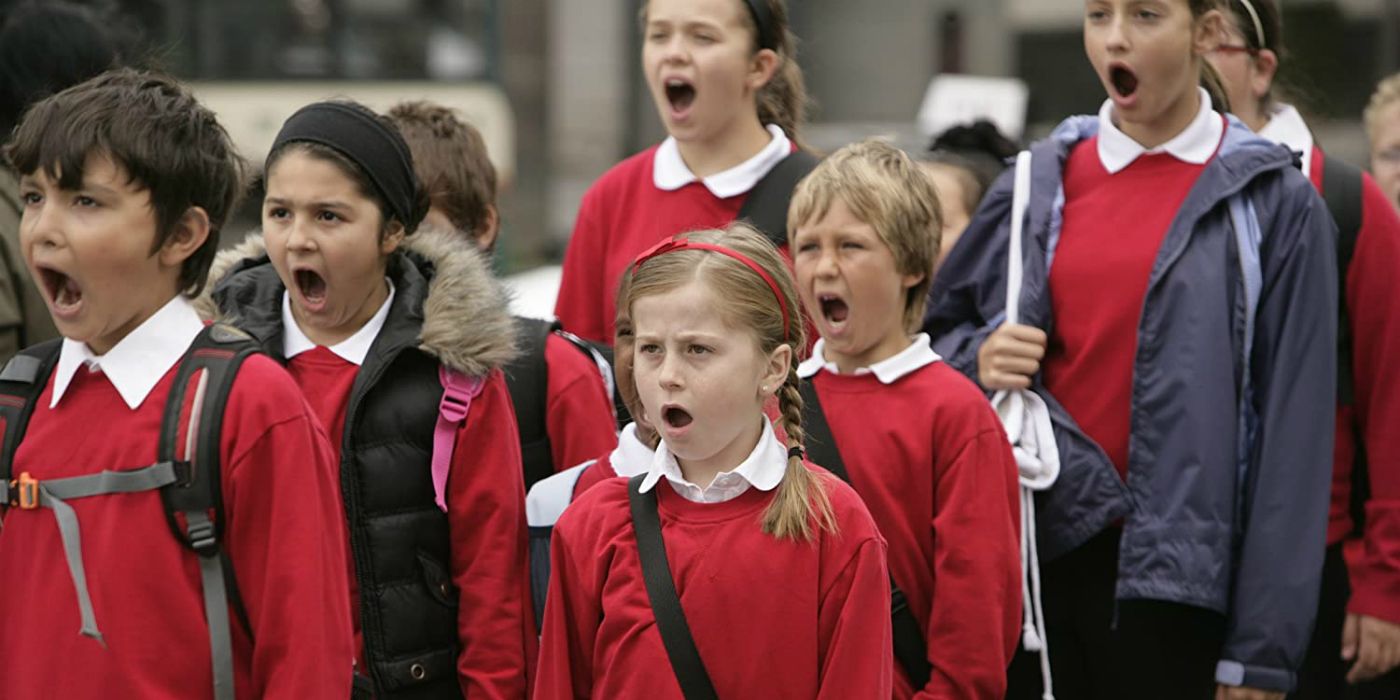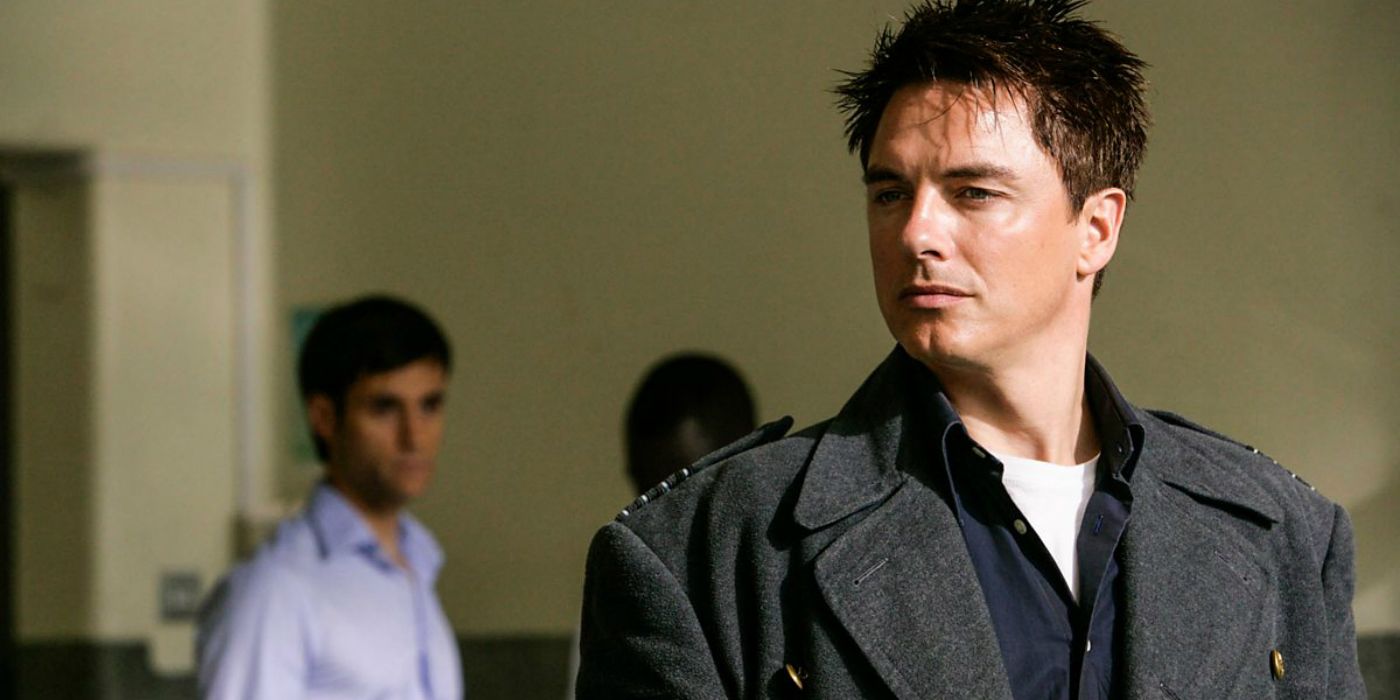The reboot of Doctor Who in 2005 marked a new era of science fiction for fans, but it was the series’ 2006 spinoff Torchwood that created the best modern Doctor Who story yet, Torchwood: Children of Earth. The five-episode miniseries comprises Torchwood season 3, packing three-months-worth of suspense and action into just five days. With a government conspiracy, a new form of alien life and a few valiant heroes fighting against impossible odds, Torchwood: Children of Earth has all of the substance and style of Doctor Who.
The Torchwood series follows the conflicts between Earth-based aliens and members of the Torchwood Institute, which was introduced in season 2 of Doctor Who. Torchwood’s four-person team, based in Cardiff, Wales, is led by charismatic omnisexual Captain Jack Harkness (John Barrowman). Torchwood seemed to reach its dramatic peak by the end of season 2, when two of the main characters — tech expert Toshiko Sato (Naoko Mori) and doctor Owen Harper (Burn Gorman) — unexpectedly died. Instead of letting the tragic ending lie, however, Executive Director Russell T. Davies went on to create a story about the struggle for survival within the team and across the planet.
Why Torchwood Season 5 Hasn't Happened (Despite Not Being Cancelled)
In Torchwood: Children of Earth, surviving team members Jack, Gwen (Eve Myles), and Ianto (Gareth David-Lloyd) are plunged into a global war between humanity and a mysterious alien race, the 456, who demand 10% of the Earth’s children. In the ensuing chaos, the team has to fight against aliens and bureaucrats, resisting the deadly complacency of their own government. The success of Children of Earth, an eminently contemporary story, marked a resurgence of the miniseries and raised the bar for Doctor Who.
Torchwood: Children of Earth Is The Tightest Modern Doctor Who Story
Because Torchwood: Children of Earth was a five-episode miniseries, producers and writers were able to plan the story arc from beginning to end, answering each question and resolving each conflict. The non-serial nature of the show meant that, unlike in Doctor Who, there were no continuity errors, no inconsistencies and no awkward add-ons to seemingly complete storylines. Plus, with just 300 minutes of screen time, there was no room for filler dialogue or extraneous episodes. The drama of the series was intensified by the fact that it aired in real time, with each episode or “day” premiering in sequence from July 6-10, 2009.
Throughout the series, every moment is focused on furthering the story. Glimpses into the home life of John Frobisher (played by future Doctor, Peter Capaldi) humanize him and show how even a loving father and husband can kill out of fear. The introduction of Jack’s daughter Alice (Lucy Cohu) and grandson Steven (Bear McCausland) show that even he has something to lose and sets up Jack’s later sacrifice. Even an expository scene in which Jack explains who the 456 are and what they want delves into his backstory, revealing a personal connection to the aliens and heightening the stakes.
Children of Earth is an Epic Doctor Who Story
Torchwood: Children of Earth takes place on a single planet — Earth — and in a single time period — a week in the late-2000s. But even though there’s no time or space travel in the TARDIS, the scale of the story is still epic. The power of the 456 spans the globe, crossing international boundaries and timezones. For an audience used to contained threats, the unlimited influence the 456 seem to have over humanity is frightening.
Doctor Who: How Old Every Version Of The Doctor Is
The fact that the story takes place on Earth instead of on a distant planet also makes it hit closer to home (although it does prompt some curiosity about where UNIT is while the 456 are attacking). Many episodes of Doctor Who thrust the audience into extreme conflict on extraterrestrial worlds, with the Doctor and his companion taking the role of outsiders. In Torchwood: Children of Earth, disaster strikes in the heart of London, bringing an alien menace into the homes of humanity.
As children across the planet are paralyzed and forced to speak in unison, the audience also gets glimpses into individual households, making the crisis more relatable. Seeing the families of Jack and Ianto struggle to deal with their children being taken over puts the audience in their shoes. As the story follows the heroics of the Torchwood team, these intimate scenes help viewers understand the terror of facing an incomprehensible threat.
Children of Earth Has Everything That Makes Who Great (Without the Doctor)
Torchwood: Children of Earth may not include the most beloved time traveler in history, the Doctor, but it still has everything that makes Doctor Who great. A plausibly scary alien is, of course, the number one requirement, and the 456 fit the bill nicely. In introducing the new alien race, the writers embrace one of the most terrifying concepts in science fiction — the unknown. The audience never gets a clear look at the aliens, and doesn’t even know their true name. The 456 is a moniker based on the radio frequency they use.
Children of Earth also features strong performances from the main cast and fleshed-out, sympathetic supporting characters such as John Frobisher and Lois Habiba (Cush Jumbo), another Doctor Who essential. The show often uses secondary characters to bring a fresh perspective and sense of urgency to the conflict. Additionally, many of the best Doctor Who episodes include moments of humor to deepen the drama and provide some relief to the audience. Torchwood: Children of Earth is no different, with several wry, witty moments between characters that bring a lightness to the show amid all the tragedy.
Finally, while the Doctor Who reboot allowed writers to explore 21st-century issues, Torchwood: Children of Earth took it a step farther, delving into darker and more mature subject matter. Like Doctor Who, it didn’t shy away from commenting on modern society and politics. The elected officials in Children of Earth are flawed, selfish people who lie to their constituents because it’s easier than telling them the truth. And even as they argue in favor of sacrifice for the greater good, they manipulate the system to avoid having to make any personal sacrifices.
Like Doctor Who, Torchwood: Children of Earth includes some shocking twists, ruthlessly killing off characters, namely Ianto Jones and Steven Carter, in service of the story. While the death of Ianto raised outrage among fans, it’s hard to deny that it made Children of Earth one of the most memorable and effective Doctor Who stories aired. Throughout the show, Captain Jack Harkness confronts moral ambiguities that are spotlighted in Doctor Who episodes, struggling with a decision about whether to save the world or save a single life.




